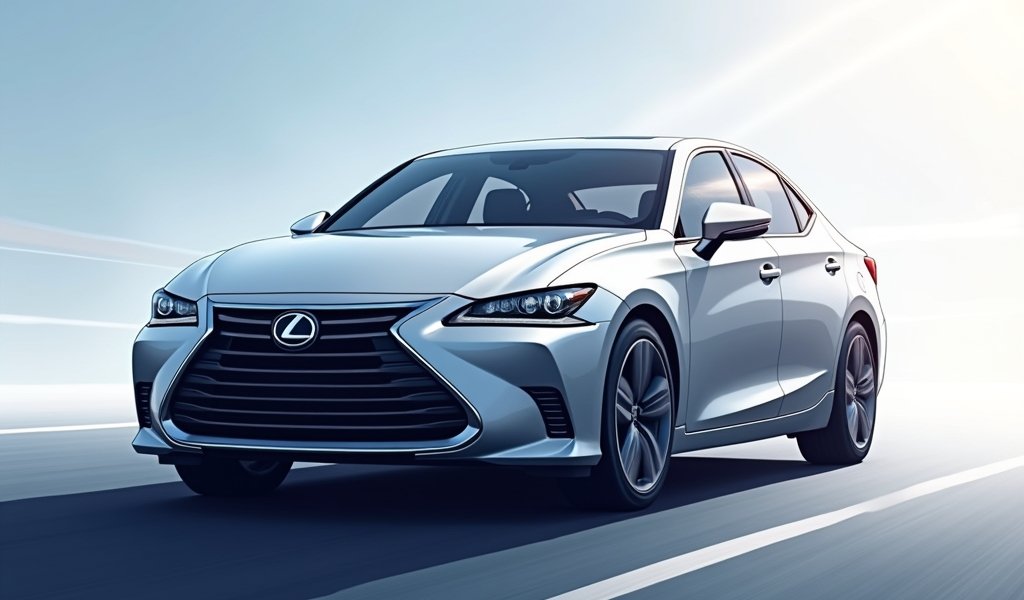Overview
This article explains why comparing car insurance quotes is essential for saving money (typically $400-$700 annually) while ensuring adequate coverage, and provides detailed guidance on how to effectively compare quotes, understand coverage types, maximize discounts, avoid common mistakes, and time your comparisons strategically. The author emphasizes that the goal isn’t finding the cheapest premium but the best overall value—proper protection at a fair price from a reputable company with good claims service.
Table of Contents
- Why Comparing Car Insurance Quotes Matters
- Benefits of Comparing Insurance Quotes Online
- How to Compare Car Insurance Quotes Effectively
- Factors That Affect Your Insurance Rates
- Understanding Different Coverage Types
- Insurance Discounts You Shouldn’t Miss
- Common Mistakes When Comparing Quotes
- Best Tools and Websites for Quote Comparison
- When to Compare Car Insurance Quotes
- Conclusion
- Frequently Asked Questions
Why Comparing Car Insurance Quotes Matters
As someone who’s spent years helping car owners save money while keeping their vehicles in top shape, I’ve found that many folks overlook one crucial aspect of car ownership costs: insurance. I’ve seen drivers loyally stick with the same insurance company for decades, never realizing they might be overpaying by hundreds of dollars each year.
The truth is, car insurance pricing isn’t standardized. Each company uses their own unique formula to calculate your premium, weighing factors like your driving history, vehicle type, and even your credit score differently. This means that for the exact same coverage, you might pay $800 with one company and $1,300 with another.
According to a study by the Insurance Information Institute, drivers who compare car insurance quotes online typically save between $400 and $700 annually. That’s money you could be putting toward preventative maintenance, upgrades, or even that road trip you’ve been planning.
Just as I wouldn’t recommend putting off regular oil changes to save a few bucks (the long-term engine damage isn’t worth it), I also don’t recommend sticking with overpriced insurance out of convenience. Both decisions end up costing you more in the long run.
Benefits of Comparing Insurance Quotes Online
Remember when comparing insurance meant calling multiple agents and spending hours on the phone? Those days are long gone, thankfully. The digital revolution has transformed this process just like it’s changed how we diagnose car problems.
Online quote comparison offers several distinct advantages:
- Time efficiency: Complete multiple quotes in 15 minutes versus hours on the phone
- Convenience: Compare quotes anytime, day or night, from your couch
- Transparency: See coverage details side-by-side for easier comparison
- No pressure: Review options without a salesperson pushing you to decide
- Broader options: Access insurers that don’t have local offices in your area
When you understand car insurance basics, online comparison becomes even more powerful. You’ll quickly recognize which companies offer the best value for your specific situation rather than just the lowest premium.
I’ve helped countless car owners through this process, and the look on their faces when they realize they’ve been overpaying for years is priceless. One customer, a retiree on a fixed income, saved over $900 annually while actually improving her coverage—that’s a meaningful difference in her budget.

How to Compare Car Insurance Quotes Effectively
Comparing car insurance isn’t just about finding the lowest number—it’s about finding the best value for your specific situation. Think of it like comparing parts for your car: the cheapest isn’t always the wisest choice long-term.
Here’s my step-by-step process for effective comparison:
Step 1: Gather Your Information
Before starting, have these items ready:
- Driver’s license and information for all drivers in your household
- Vehicle information including year, make, model, and VIN
- Current insurance declaration page (to match coverage)
- Driving history details (approximate dates of accidents/violations)
- Vehicle mileage and primary use information
Step 2: Determine Your Coverage Needs
Just as I’d never recommend the same maintenance schedule for a high-mileage work truck and a weekend sports car, your insurance needs depend on your specific situation. Consider:
- Vehicle value and age (newer cars often warrant full coverage)
- Your financial situation (higher liability limits protect your assets)
- Your risk tolerance (higher deductibles mean lower premiums but more out-of-pocket risk)
- Special needs (classic car coverage, rideshare endorsements, etc.)
Step 3: Use Multiple Comparison Methods
For the most thorough results, use a combination of:
- Insurance comparison websites (like The Zebra, Insurify, or Compare.com)
- Direct quotes from major insurers’ websites
- Quotes from independent agents who represent multiple companies
This multi-pronged approach ensures you don’t miss potential savings. Some insurers don’t appear on comparison sites, while others offer special discounts through agents.
Step 4: Make Valid Comparisons
Ensure you’re making apples-to-apples comparisons by:
- Matching coverage limits exactly across quotes
- Using identical deductibles for each quote
- Including the same drivers and vehicles on each policy
- Accounting for all applicable discounts
The most common mistake I see is comparing policies with different coverage levels. A $500 liability-only policy isn’t comparable to a $900 full-coverage policy with $100k limits.
Factors That Affect Your Insurance Rates
Understanding what influences your rates helps you make smarter decisions. Just as knowing your car’s weak points helps prevent unexpected breakdowns, knowing these factors helps prevent insurance pricing surprises.
Driver-Related Factors
- Driving record: Accidents and violations can impact your rates for 3-5 years. A single at-fault accident increases premiums by 28% on average.
- Age and experience: Young drivers typically pay more until around age 25. Rates generally decrease through middle age before rising again for seniors.
- Credit score: In most states, this significantly impacts rates. Drivers with poor credit pay 91% more on average than those with excellent credit, according to Consumer Reports research.
- Coverage history: Continuous insurance coverage is rewarded, while gaps can increase rates by 5-20%.
Vehicle-Related Factors
- Vehicle age and value: Newer, more expensive cars generally cost more to insure due to higher repair/replacement costs.
- Safety ratings: Vehicles with better safety ratings often qualify for lower premiums.
- Theft rates: Models frequently targeted by thieves face higher comprehensive premiums.
- Repair costs: Vehicles with expensive parts or complex systems can be pricier to insure.
Location Factors
- State regulations: Insurance requirements vary by state, affecting base rates.
- Urban vs. rural: Urban areas typically see higher rates due to increased accident and theft risk.
- Weather patterns: Areas prone to hail, flooding, or other natural disasters may have higher comprehensive premiums.
- Local crime rates: Higher vehicle theft areas face increased insurance costs.
I’ve seen neighboring towns with premium differences of 15% or more due to these local factors. Understanding which elements impact your premium can help you make strategic decisions about where you garage your vehicle and which safety features to prioritize.
Understanding Different Coverage Types
When comparing quotes, you need to know what you’re buying. Insurance terminology can be as confusing as deciphering a check engine light without a scanner, so let’s break it down in plain English.
Essential Coverage Types
- Liability coverage: Pays for others’ injuries and property damage when you’re at fault. This is like your vehicle’s brakes—absolute minimum required for safety, but more is better. State minimums (often around 25/50/25) are rarely enough to cover a serious accident.
- Collision coverage: Repairs your vehicle after an accident regardless of fault. Think of this as your car’s airbags—optional but highly recommended unless your vehicle has very low value.
- Comprehensive coverage: Covers non-collision incidents like theft, vandalism, animal strikes, and weather damage. This is your vehicle’s security system—providing protection against the unexpected.
- Uninsured/underinsured motorist: Protects you when hit by a driver without adequate insurance. With roughly 1 in 8 drivers uninsured nationally, this is as essential as keeping a spare tire in your trunk.
Additional Coverage Options
- Personal injury protection (PIP): Covers medical expenses regardless of fault. Required in no-fault states.
- Medical payments: Similar to PIP but with lower limits and available in at-fault states.
- Rental car reimbursement: Covers rental costs while your vehicle is being repaired after a covered claim.
- Gap insurance: Pays the difference between your loan balance and vehicle value if your car is totaled. Essential for newer financed vehicles with minimal down payments.
- Roadside assistance: Covers towing, jump-starts, tire changes, and lockout services.
When comparing quotes, many drivers focus exclusively on premium amounts without understanding coverage differences. I’ve had customers proudly tell me they got insurance for half what they were paying—only to discover they drastically reduced their protection. In insurance, as in maintenance, cutting corners can lead to costly problems down the road.

Insurance Discounts You Shouldn’t Miss
Insurance companies offer numerous discounts, but they won’t always automatically apply them all. Just like finding those hidden maintenance shortcuts that save time without compromising quality, knowing available discounts can dramatically reduce your premium without reducing coverage.
Driver-Based Discounts
- Good driver discount: Typically 10-30% off for maintaining a clean record for 3-5 years.
- Defensive driving course: Taking an approved defensive driving course can save 5-15% for 3-5 years.
- Good student discount: Full-time students with good grades (typically B average or better) can save 5-25%.
- Professional/alumni discounts: Many insurers offer special rates for certain professions, military personnel, or alumni associations.
Policy-Based Discounts
- Multi-policy discount: Bundling auto with home, renters, or other policies typically saves 5-25%.
- Multi-vehicle discount: Insuring multiple vehicles on one policy usually saves 10-25%.
- Payment discounts: Paying in full, setting up automatic payments, or going paperless can save 5-10%.
- Early shopping discount: Some companies offer discounts when you get a quote several days before your current policy expires.
Vehicle-Based Discounts
- Safety features: Anti-lock brakes, airbags, and electronic stability control can reduce premiums.
- Anti-theft devices: Alarm systems, tracking devices, and immobilizers can lower comprehensive premiums by 5-15%.
- New vehicle discount: Many insurers offer special rates for newer vehicles, particularly those with advanced safety features.
- Low mileage discount: Driving fewer miles annually can qualify you for reduced rates.
When comparing quotes, always ask about specific discounts you might qualify for. I’ve helped customers lower their insurance premium by up to 40% just by ensuring all eligible discounts were applied. Don’t assume the computer will automatically catch everything—sometimes a quick conversation about your situation can uncover substantial savings.
Common Mistakes When Comparing Quotes
Even savvy car owners make these mistakes when shopping for insurance. Avoiding them is like knowing those common DIY repair pitfalls that can turn a simple job into a costly headache.
Focusing Only on Premium
The biggest mistake is choosing solely based on price. A policy might be cheaper because it offers less protection or has higher deductibles. I’ve seen customers save $200 annually only to face thousands in out-of-pocket costs after a claim.
Instead, look at the total value equation: coverage + service quality + price. Sometimes paying slightly more for significantly better coverage or superior claims service is the smarter financial decision.
Inconsistent Coverage Comparisons
Comparing different coverage levels across quotes invalidates your comparison. Ensure each quote includes:
- Identical liability limits
- Same deductibles for collision and comprehensive
- Equal coverage for extras like rental reimbursement
- Matching uninsured/underinsured motorist coverage
Forgetting to Research Company Reputation
Premium savings mean little if your claim gets denied or takes months to resolve. Before switching, research:
- Financial stability ratings (A.M. Best, Standard & Poor’s)
- Customer satisfaction scores (J.D. Power)
- Complaint ratios with state insurance departments
- Claims processing reputation
Overlooking Policy Details
The fine print matters. Watch for:
- OEM parts coverage vs. aftermarket parts
- Diminished value coverage after accidents
- Special limits on personal property
- Towing and roadside assistance details
These details might seem minor until you’re facing a claim. Just as using the wrong oil weight seems insignificant until engine problems develop, these policy differences become critically important when you need your insurance most.
Best Tools and Websites for Quote Comparison
With dozens of comparison tools available, which ones actually deliver useful results? Based on my experience helping customers find the best coverage, here are the most effective options:
Comprehensive Comparison Sites
- The Zebra: Compares rates from over 100 providers with minimal personal information required. Their transparent methodology and educational resources make them my top recommendation.
- Insurify: Offers real-time quotes from numerous insurers and specializes in finding applicable discounts you might miss.
- Compare.com: Provides detailed comparisons and excels at explaining coverage differences between quotes.
Direct Provider Tools
Don’t overlook getting quotes directly from these companies, as they sometimes offer online-exclusive discounts:
- Progressive’s Name Your Price Tool
- Geico’s quick quote system
- State Farm’s Drive Safe & Save program
- USAA (if you qualify through military affiliation)
Agent-Based Options
For complex situations or specialized vehicles, these options provide personalized guidance:
- Independent insurance agents representing multiple companies
- AAA insurance services (membership required)
- Costco’s insurance program through Ameriprise
For most effective results, I recommend using at least one comparison site plus direct quotes from 2-3 major insurers not represented on that platform. This approach typically takes under 30 minutes but can uncover hundreds in potential savings.
When to Compare Car Insurance Quotes
Timing matters when shopping for insurance. Just as there’s an optimal schedule for maintenance tasks, there are strategic times to compare insurance quotes for maximum benefit.
Regular Comparison Intervals
Even without life changes, I recommend comparing quotes:
- Annually before your policy renewal
- When your credit score improves significantly
- After 3-5 years with the same insurer (loyalty doesn’t always pay)
Life Event Triggers
Certain events should prompt an immediate insurance review:
- Moving to a new address or state
- Adding or removing a driver from your household
- Purchasing a new or additional vehicle
- Marriage or divorce
- Major credit improvements
- Significant changes in annual mileage
Driving Record Milestones
These moments often trigger rate improvements:
- When accidents or violations reach the 3-year mark
- After completing defensive driving courses
- When young drivers reach age 25
- After maintaining a clean record for 1, 3, or 5 years (varies by insurer)
I’ve seen dramatic rate drops when accidents fall off driving records—sometimes 20-30% overnight. Setting a calendar reminder for these milestone dates can lead to substantial savings with minimal effort.
Conclusion
Comparing car insurance quotes online isn’t just about saving money—though the average savings of $500+ annually certainly makes it worthwhile. It’s about being a smart car owner who understands that proper protection doesn’t have to come with an inflated price tag.
Just as I advise my customers to follow maintenance schedules but shop around for fair service pricing, I encourage you to maintain proper insurance coverage while ensuring you’re not overpaying. The process takes less than an hour but can save you thousands over your vehicle ownership period.
The insurance marketplace changes constantly, with companies adjusting their pricing algorithms and competitive positioning. Your personal circumstances evolve too—from improved credit scores to aging vehicles to changing household drivers. Each change presents an opportunity to find better value.
Take control of this significant car ownership expense by comparing quotes today. Use the tools and strategies outlined above, avoid the common pitfalls, and remember that the goal isn’t just the lowest premium—it’s the best protection for your money.
Your car deserves proper care, and your wallet deserves a break. Online quote comparison delivers both.
Frequently Asked Questions
How often should I compare car insurance quotes?
At minimum, compare quotes annually before your policy renewal. Additionally, compare after major life changes like moving, adding a vehicle, or when violations reach the 3-year mark on your driving record.
Will comparing quotes hurt my credit score?
No, insurance quote comparisons typically use “soft inquiries” that don’t affect your credit score. You can compare multiple quotes without any negative impact on your credit.
How much information do I need to provide for accurate quotes?
For basic quotes, you’ll need driver details (age, driving history), vehicle information (year, make, model), and your ZIP code. More accurate quotes require your VIN, specific coverage selections, and sometimes your current insurer information.
Is the cheapest quote always the best option?
No, the cheapest quote often provides less coverage or comes from a company with poorer claims service. Focus on value—adequate coverage from a reputable company at a competitive price.
Will my current insurance company know if I’m shopping around?
No, your current insurer won’t be notified when you request quotes from competitors. You’re free to shop around without your current provider knowing until you decide to cancel.


Pingback: Car Insurance Without License 5 DIY Tips - knowsyourcar.com
Pingback: Top Rated Car Insurance Companies Guide - knowsyourcar.com
Pingback: how much is car insurance per month Tips - knowsyourcar.com